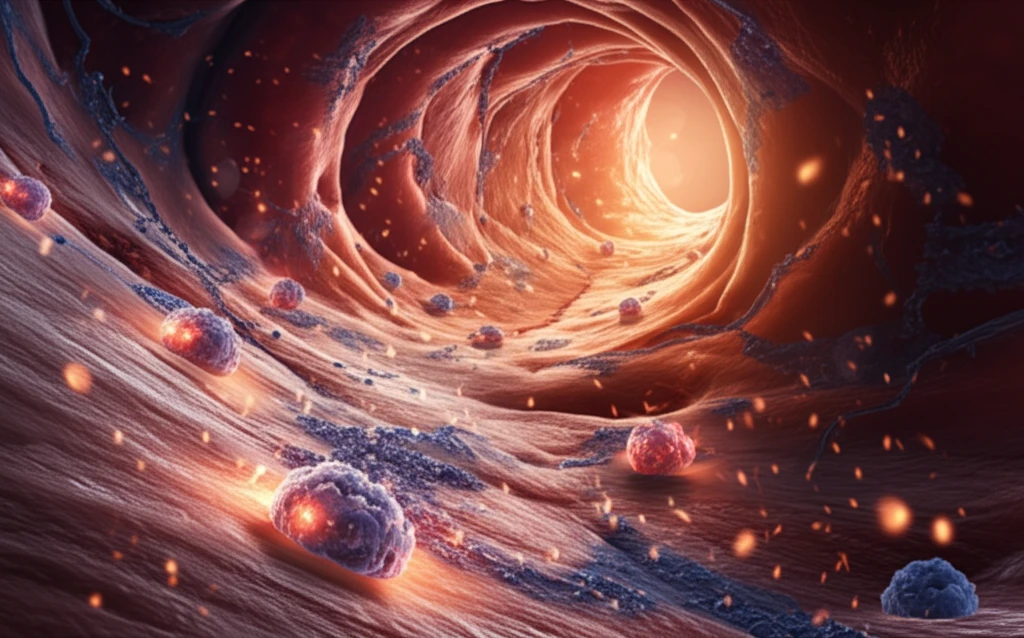
Unlocking Heart Health: How a Common Lipid Affects Your Arteries
"New research sheds light on how lysophosphatidylcholine (lysoPC) influences artery health, offering potential insights for preventing heart disease."
Coronary heart disease (CHD) remains a leading cause of death globally, underscoring the urgent need to understand its underlying mechanisms. While the pathophysiology of CHD is complex, thrombosis, the formation of blood clots, plays a critical role in the development and progression of atherosclerosis, the hardening of the arteries.
The balance between fibrin formation and breakdown, regulated by tissue-type plasminogen activator (t-PA) and plasminogen activator inhibitor type 1 (PAI-1), is crucial for maintaining healthy arteries. An elevated level of PAI-1 is associated with an increased risk of CHD, and its gene expression is heightened in atherosclerotic arteries, particularly within vascular smooth muscle cells (VSMCs), a major component of arterial plaques.
Oxidative stress, a key player in atherosclerosis, leads to the formation of oxidized low-density lipoprotein (LDL). Lysophosphatidylcholine (lysoPC), a major component of oxidized LDL, exerts various adverse effects on VSMCs. This article explores how lysoPC impacts the plasminogen activator system in cultured VSMCs, potentially influencing the development of atherosclerosis.
LysoPC's Impact on the Plasminogen Activator System: What the Study Reveals

A study investigated the impact of lysoPC on the plasminogen activator system in rat VSMCs. The key finding was that lysoPC stimulates the production of PAI-1, a protein that inhibits the breakdown of blood clots. This stimulation occurs at both the protein and gene expression levels. However, lysoPC did not affect the production of t-PA, which promotes clot breakdown.
- Increased PAI-1 Production: LysoPC stimulates both protein and gene expression of PAI-1.
- Decreased t-PA Activity: LysoPC reduces the activity of free t-PA, hindering the body's ability to dissolve clots.
- No Change in t-PA Production: While activity changes, lysoPC doesn't alter t-PA protein expression itself.
What Does This Mean for Heart Health?
This research highlights the complex interplay of factors contributing to atherosclerosis and CHD. By demonstrating how lysoPC influences the plasminogen activator system in VSMCs, the study offers valuable insights for potential therapeutic interventions. Further research is needed to fully elucidate the mechanisms involved and to explore the potential of targeting these pathways to prevent or treat heart disease.
